- News
- Reviews
- Bikes
- Accessories
- Accessories - misc
- Computer mounts
- Bags
- Bar ends
- Bike bags & cases
- Bottle cages
- Bottles
- Cameras
- Car racks
- Child seats
- Computers
- Glasses
- GPS units
- Helmets
- Lights - front
- Lights - rear
- Lights - sets
- Locks
- Mirrors
- Mudguards
- Racks
- Pumps & CO2 inflators
- Puncture kits
- Reflectives
- Smart watches
- Stands and racks
- Trailers
- Clothing
- Components
- Bar tape & grips
- Bottom brackets
- Brake & gear cables
- Brake & STI levers
- Brake pads & spares
- Brakes
- Cassettes & freewheels
- Chains
- Chainsets & chainrings
- Derailleurs - front
- Derailleurs - rear
- Forks
- Gear levers & shifters
- Groupsets
- Handlebars & extensions
- Headsets
- Hubs
- Inner tubes
- Pedals
- Quick releases & skewers
- Saddles
- Seatposts
- Stems
- Wheels
- Tyres
- Health, fitness and nutrition
- Tools and workshop
- Miscellaneous
- Buyers Guides
- Features
- Forum
- Recommends
- Podcast
review
£699.99
VERDICT:
Very good direct-drive trainer and excellent value for money
Weight:
16,000g
Contact:
At road.cc every product is thoroughly tested for as long as it takes to get a proper insight into how well it works. Our reviewers are experienced cyclists that we trust to be objective. While we strive to ensure that opinions expressed are backed up by facts, reviews are by their nature an informed opinion, not a definitive verdict. We don't intentionally try to break anything (except locks) but we do try to look for weak points in any design. The overall score is not just an average of the other scores: it reflects both a product's function and value – with value determined by how a product compares with items of similar spec, quality, and price.
What the road.cc scores meanGood scores are more common than bad, because fortunately good products are more common than bad.
- Exceptional
- Excellent
- Very Good
- Good
- Quite good
- Average
- Not so good
- Poor
- Bad
- Appalling
The Tacx Flux Smart is currently the closest thing there is to an inexpensive fully smart direct drive indoor trainer. It's a doddle to set up and get started, measures your power to a useful level of accuracy and consistency, and works with popular virtual riding applications such as Zwift to make indoor training less dull. It's not cheap, but it's good value compared to its competition.
It's also fairly quiet, so the family can watch TV in the next room and you won't annoy your downstairs neighbours if you live in a flat. But most importantly, it's so straightforward to use that it actually makes indoor training – dare I say it? – fun.
> Find your nearest dealer here
Feel & response
People talk a lot about how close the pedalling feel of an indoor trainer is to riding a bike on the road. I've never used one that felt much like being outside, and the Flux really doesn't. The feel of resistance to pedalling is that you're pushing a mechanical brake, rather than pushing a bike through the air. It's not unpleasant, but you're never going to close your eyes and imagine you're on the road.
It's noticeable that there's a few seconds' delay before the resistance increases when you go from one power level to the next.
Tacx claims the Flux reads your power to an accuracy of +/- 5%, but after a warm-up period it achieves better than this, tracking the readings from other power meters to within 2% or so.
That's accuracy as good as you'll get from pretty much any power meter out on the road. It's much easier to stick to the set power for an interval with 'ERG mode' (more on this below) controlling the trainer's resistance, rather than trying to keep an eye on a computer while playing dodge-the-4WD on the open road.
You don't have to use Zwift or some other paid-for service, though. Tacx supplies a free iOS or Android app, Tacx Training, that can control the Flux. Go to the companion website and you can create workouts, though annoyingly it doesn't seem to be possible to base a workout on percentages of your FTP (functional threshold power), only on absolute power. (There's an outline for an FTP test included in our Six Weeks to Fitness training plan, here.)
The open source software Golden Cheetah can also pick up data from the Flux, when you plug an ANT+ dongle into your Mac, PC or even Linux box.
Getting started
The level of It Just Works here is impressive. Pop your bike on it, plug the Flux into the mains, an ANT+ antenna into your computer, start up your chosen training software, and away you go. Zwift quickly finds the Flux as a source of speed and power data and also, surprisingly, of cadence. Some electronic wizardry inside the unit picks up the variance in power round your pedal stroke and works out how fast you're pedalling.
Once your training software has detected the Flux, there's one more step. Tacx provides a free app for iOS and Android – Tacx Utility – that communicates with the Flux and reads power, cadence and virtual speed. It also provides calibration. You start riding, spin up to 30km/h, and then let it coast down, and then away you go.
Training with the Flux
I used the Flux with Zwift, which I'd started exploring as a training tool while testing the Tacx Booster. Tacx offers its own training software – Tacx Trainer 4 – but it only works under Windows and it's an extra €65, or €125 for the Advanced version. With Trainer 4 you can load films that show you famous cycling passes and race routes as you train; they're €7.40 to €69.
But I like Zwift, not least for the feeling that you're not alone, slogging away in the back room, there are thousands of other idiots round the world staring at a screen and sweating.
With Zwift and similar applications in ERG mode, the Flux can provide the resistance necessary to make you ride at your target power for a session or interval. Or, you can run in non-ERG and just have your software tell you off for being a slacker.
Oops
I was a smart trainer newbie with the Flux, and it took a while for me to twig how ERG mode worked. I was slogging away on Zwift's volcano circuit, doing a session that had me riding five-minute intervals at my FTP when I realised I'd totally failed to understand it.
In ERG mode – ERG apparently stands for ergometer – the trainer delivers the necessary resistance to make you ride at the power level for your interval, regardless of the gear you're in or your cadence.
I'd previously been changing gear at the transition between one power level and the next, as I'd had to do on the Tacx Booster. Completely pointless. I should have just focused on pedalling and let the trainer take care of setting the resistance level for me.
I did that for the rest of the session (and afterwards), and it made hitting the target power, well, not easier, but less mentally fatiguing.
This is a great function of smart trainers, but I can't be the only person coming to the world of interactive training and discovering these features by accident. A more detailed manual would be helpful.
Features
The Flux is a fully smart home trainer in that it can wirelessly transmit your effort level to a nearby computer or other compatible device, and it can be controlled by that device, varying its resistance according to a programmed training session schedule or in response to the virtual slope you're riding in Zwift.
It communicates via the ANT+ and Bluetooth Smart protocols. You're going to need to get an ANT+ dongle to use it with most computers or tablets; I used this Anself widget to connect to my laptop; it works fine and costs just £11. A couple of LEDs on the side of the unit tell you when it's established communication via ANT+ or Bluetooth.
The business end of the Flux is an electromagnetic brake that varies the resistance, and a 7kg flywheel to smooth the pedalling feel. The brake is capable of providing a lot of resistance: you'll need to put out 1,500 watts to overcome its maximum setting. Used with Zwift, it simulates a slope of up to 10% if you're masochistic enough to use Zwift's full gradient simulation setting. Unlike some high-end indoor trainers the Flux doesn't have a motor to turn the flywheel and simulate descending.
The only major gotcha with the Flux is that you can't use it with a long-arm rear derailleur. In some gears, the bottom of the derailleur will catch on the body of the unit, close to where the legs attach. I honestly don't know how much to criticise Tacx for this. On the one hand, most Flux buyers are likely to be training for racing of some sort and aren't going to be using bikes with 32-tooth big sprockets. On the other hand, it seems a daft limitation when it would have been so easy to avoid, and it shuts out riders who use low gears for very hilly terrain.
As it happens, you can still use the Flux with a bike that has a long-cage derailleur, as long as you find a gear that doesn't cause it to rub the casing, and use ERG mode to vary the resistance. Just don't forget and change gear.
Assembly
Putting the Flux together is a doddle. The front feet slide into place in the body and are held with a couple of sturdy bolts that tighten with a supplied 8mm hex. Tacx suggests fitting your cassette first, and that's good advice as it's easier to drop the sprockets on with the unit's main body on its side than to faff around getting them into place with it vertical. And you can probably guess I read the instructions after I put it together.
The Flux has an Edco MultiSys freehub body that will take either Shimano or Campagnolo cassettes, and that has steel inserts to stop loose sprockets from digging into the aluminium main body. That makes fitting a cassette slightly more complicated than usual as you can't just eyeball the splines, but you're only going to need to do it once. Props to Tacx for making life easier for Campagnolo users, who otherwise would have to change the freehub body or hunt down a Campagnolo-compatible Flux.
Usually, fitting a cassette just requires a lockring tool. For a direct-drive trainer you'll need a chainwhip to hold the sprockets in place too, otherwise tightening the lockring will drive the mechanism.
Documentation
You get a quick start guide and, er, that's it. This is an expensive bit of kit and if you're a smart trainer newbie you won't understand everything it does. As I've already said, it took me a while to grasp how it works when your training software sets the resistance using ERG mode. Just a run-down of the features and capabilities would be helpful.
Teething troubles
Search forums and the like for user opinions on the Flux and you immediately find that Tacx had quality control problems with some early units. An internal drive belt could come loose, rendering the trainer useless, and there were other problems with some early units. Tacx claims only a small percentage of trainers were affected, but that's not much consolation if yours was one of them.
The first review sample Tacx sent us made a strange rubbing sound as you pedalled. It definitely wasn't right so I sent a short video clip of it to Tacx and it immediately arranged a replacement. I don't think I got special treatment as a journo. Nobody is happy to get a faulty device, but people seem generally impressed with how quickly and efficiently Tacx has arranged replacements for faulty Flux trainers. If a Flux is going to develop a problem, it will happen quickly, usually in the first hour of use. This review is based on the replacement Flux, which has functioned perfectly.
Conclusion
Seven hundred quid is a heck of a lot of money for an indoor trainer, even a fully smart one. The cheapest controllable trainer Tacx offers is the Flow Smart (RRP £220, usually about £200), but this tyre-driven unit doesn't offer the accuracy of the Flux, or the 1,500-watt resistance. The Flux offers a lot more for your money.
> Buyer's Guide: The best turbo trainers and rollers
It's nevertheless significantly cheaper than its rivals. The Wahoo Kickr Smart is £999, while Tacx's own Neo, the CycleOps Hammer and the Elite Drivo are £1,200, though the latter three can all usually be found for less than a grand. The Flux is decent value at £700 and can usually be found for less than £600.
That makes it a very tempting option if you want to take the quality of your training up a notch. It's dead easy to set up, reads power accurately and I can't emphasise enough how much easier it is to train at a particular power level with ERG mode doing the thinking for you.
Verdict
Very good direct-drive trainer and excellent value for money
road.cc test report
Make and model: Tacx Flux Smart Trainer
Size tested: n/a
Tell us what the product is for, and who it's aimed at. What do the manufacturers say about it? How does that compare to your own feelings about it?
It's a direct-drive, fully smart indoor trainer that works with applications like Zwift to provide precise training sessions.
Tacx says: "The FLUX is a compact and realistic interactive direct drive and is maintenance-free. The swift response of the Smart electronics and the 7kg flywheel transmit the slightest fluctuations in resistance directly and accurately to your legs."
I'd dispute 'realistic' unless they mean 'it really feels like an indoor trainer', but otherwise that's spot on.
Tell us some more about the technical aspects of the product?
Tacx says:
Two technologies combined
With the FLUX we combined direct drive technology with an electro brake in order to offer an accessible Smart and interactive direct drive.
Power: 1500W
Max slope:10%
Automatic calibration
The set up of the FLUX enables an easy, automatic calibration process to ensure high a accuracy.
<5% accuracy
Smart & fully connected
This trainer is connected wirelessly to smartphones and tablets and knows the ANT+ FE-C protocol, enabling you to train with Tacx apps as well as third-party apps like Zwift and TrainerRoad. You can also train stand-alone; if you do not connect the trainer, it will simulate a flat road.
BIG flywheel
The FLUX offers the truest simulation of a pedal stroke as it is equipped with the heaviest flywheel to date '' 7kg
Sssst
The inner parts of the FLUX are carefully selected to minimize sound levels.
Connections revealed
The FLUX shows when it is connected to the mains and to a device over ANT+ or Bluetooth by an LED light on the side.
Stable & robust
The FLUX has been designed to enable you to really push your limits, especially when standing on the pedals.
670x650mm footprint
Plug & play
As the FLUX is a direct drive you simply remove your bike's rear wheel and place it directly on the trainer, step on and start training.
Compatible software
Tacx Smart trainers use the Bluetooth Smart and ANT+ FE-C protocol for communication which allows them to be controlled by third-party software. The software receives the speed, cadence and power from the trainer and controls the brake.
Firmware upgrades
With the Tacx Utility app you can always benefit from the latest firmware for the Tacx trainer and check the connection with other devices. When an update is available, you receive a notification and you can decide whether you want to update your trainer.
Features & specifications
FEATURES:
Type of trainer: Interactive Smart direct drive with electric brake
Magnets: 8 Permanent ferrite magnets & 8 electromagnets
Transmission: None
Electrical requirements: 110-240 Volt
Power indicator: None
Connection indicator (ANT/BT): 2 LEDs
Firmware upgradable: Yes
Supplied with: Quick release for road bikes and mountain bikes (5mm)
Suitable bikes: Width of rear fork: Race 130mm, MTB 135mm. Adapters for other widths available: , Not suitable for a long cage rear derailleur
Suitable cassettes: Various Shimano, SRAM & Campagnolo cassettes
SPECIFICATIONS:
Max. power (40 km/h): 1500 Watt
Max. slope: 10%
Simulation of descent: No
Max. torque: 22.1Nm
Max. brake force: 65N
Flywheel: Actual of 7kg
Flywheel effect: 22.8kg
Calibration: Spin down
Footprint (lxw): 670x650mm (26.4x25.6in)
Height: 465mm (18.3in)
Dimensions when folded: Not foldable
Weight: 16kg (35.3lbs)
Article number: T2900
DATA OUTPUT AND CONTROL:
Wireless communication: ANT+ FE-C: , Bluetooth Smart open
Control by: Smartphone, tablet, ANT+ FE-C bike computers and stand-alone Connect to computer via ANT+ antenna
Output: Speed, cadence and power
Read out on: Smartphone, tablet, bike computer, sports watch, computer with ANT+ antenna
Accuracy: <5%
Rate the product for quality of construction:
8/10
Very solidly built and stable.
Rate the product for performance:
8/10
Rate the product for durability:
8/10
Rate the product for weight (if applicable)
9/10
You want an indoor trainer to be heavy, for stability and smooth pedalling feel. At 16kg, the Flux is a seriously hefty beast. It's awkward as all hell to move around, because of its shape and weight. You're not going to be casually putting it in the car to take along for pre-event warm-ups.
Rate the product for value:
8/10
It's the cheapest fully smart direct-drive trainer on the market. It performs admirably, and while it's far from cheap, the quality justifies the price.
Tell us how the product performed overall when used for its designed purpose
Very well.
Tell us what you particularly liked about the product
Being able to do highly accurate training sessions and stay cosy and dry indoors.
Tell us what you particularly disliked about the product
Not being able to fit a bike with a long-arm rear derailleur. It's a niggle, but it's a very silly deficiency Tacx could easily have avoided.
Did you enjoy using the product? Yes
Would you consider buying the product? Yes
Would you recommend the product to a friend? Yes
Use this box to explain your score
The Tacx Flux is an excellent indoor trainer at a very reasonable, albeit still quite high, price. If it had the higher resistance and super-smooth feel of, say, a CyclOps Hammer, then it'd deserve a 4.5-star or maybe even 5-star score. However, its more mechanical pedalling feel and that silly incompatibility with long-arm rear mechs pull the rating down.
Nevertheless, it's still very good and if you want a fully smart turbo trainer with enough change from £1,000 to pick up a bike on eBay that can live on it permanently, it's the one you should buy.
About the tester
Age: 48
I usually ride: Scapin Style My best bike is:
I've been riding for: Over 20 years I ride: Most days I would class myself as: Expert
I regularly do the following types of riding: commuting, touring, club rides, general fitness riding, mountain biking
John has been writing about bikes and cycling for over 30 years since discovering that people were mug enough to pay him for it rather than expecting him to do an honest day's work.
He was heavily involved in the mountain bike boom of the late 1980s as a racer, team manager and race promoter, and that led to writing for Mountain Biking UK magazine shortly after its inception. He got the gig by phoning up the editor and telling him the magazine was rubbish and he could do better. Rather than telling him to get lost, MBUK editor Tym Manley called John’s bluff and the rest is history.
Since then he has worked on MTB Pro magazine and was editor of Maximum Mountain Bike and Australian Mountain Bike magazines, before switching to the web in 2000 to work for CyclingNews.com. Along with road.cc founder Tony Farrelly, John was on the launch team for BikeRadar.com and subsequently became editor in chief of Future Publishing’s group of cycling magazines and websites, including Cycling Plus, MBUK, What Mountain Bike and Procycling.
John has also written for Cyclist magazine, edited the BikeMagic website and was founding editor of TotalWomensCycling.com before handing over to someone far more representative of the site's main audience.
He joined road.cc in 2013. He lives in Cambridge where the lack of hills is more than made up for by the headwinds.
Latest Comments
- john_smith 2 hours 38 min ago
Straight into the sun is perhaps an exaggeration, but at that time it would be about ESE, and there are bits of the road which head roughly SSE, so...
- john_smith 2 hours 47 min ago
7 October was just a bit of harmless fun until the "msm" ramped it up.
- hawkinspeter 2 hours 47 min ago
It's not censored if you just pirate it
- stonojnr 3 hours 52 min ago
an example of Kesgraves "best cycling infrastructure in the country" https://maps.app.goo.gl/GsCMbzDUTPdq59qS9
- ktache 3 hours 55 min ago
They are not going full gas at every point. They would destroy themselves. And tactics, they save themselves for when effort is really needed....
- wookey 4 hours 24 sec ago
It turns out that that is national police policy. We found out from this process that there is national 'secured by design' policy which causes...
- mtbtomo 4 hours 39 min ago
Been available for quite a while, full GRX mechanical 12 speed. Probably around the same time as 105 mechanical 12 speed if I were to guess.
- TheBillder 4 hours 45 min ago
Less harmful citrus degreaser is easy to find at £8 or less for 5 litres. Works ok for me, even diluted up to 4:1. Both paraffin and white spirit...
- Veganpotter 4 hours 51 min ago
Nope, it's to keep your straps down and quieter. Plus most sunglasses are polycarbonate and aren't going to shatter like glass anyway
- Steve K 5 hours 22 min ago
And, more seriously, where's the coverage of the closure of the cycle lane which forces you to cycle on the Totton bypass.







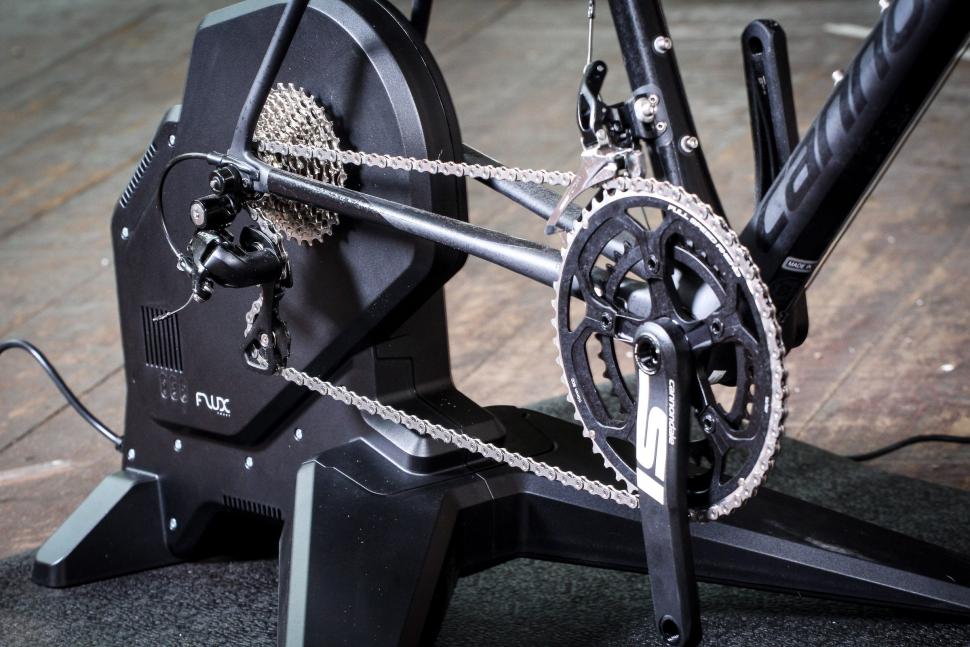



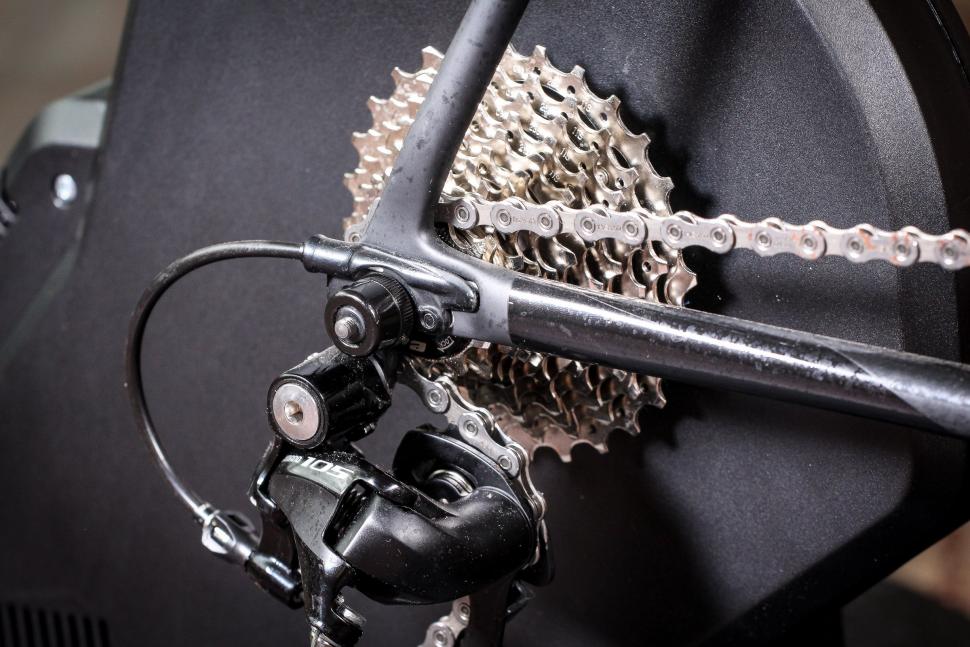
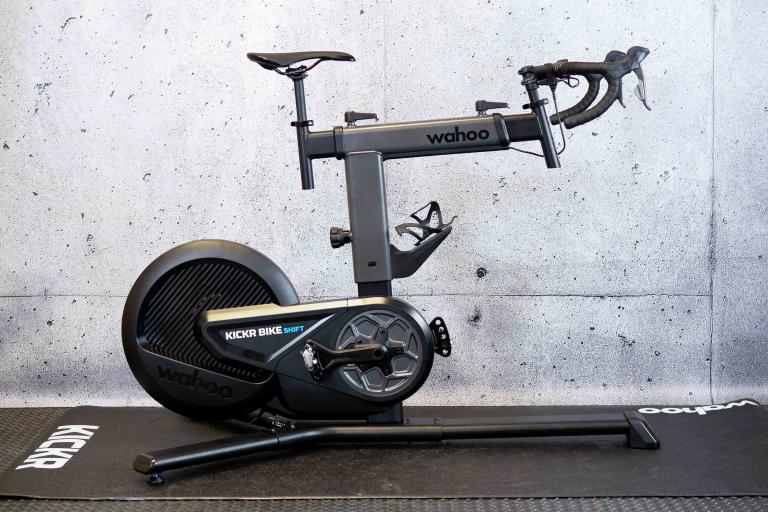
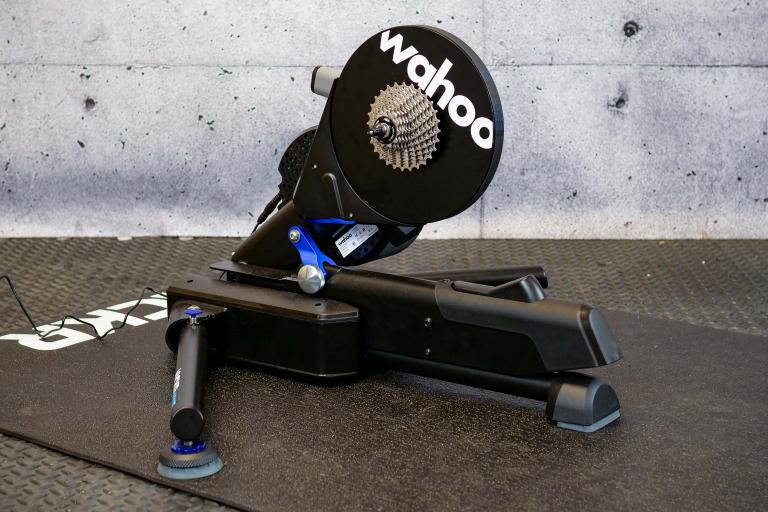
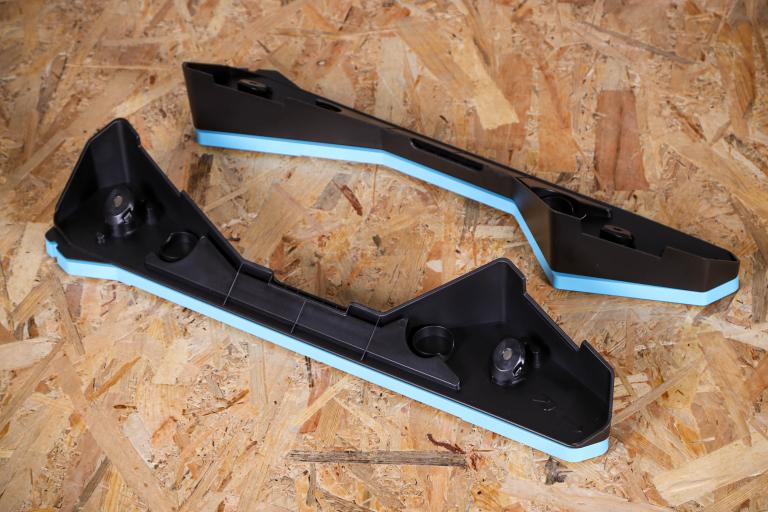

Add new comment
4 comments
Are you able to sync to Strava with this & if so how?
For me it was 2 out of 2...
First I had to send back Tacx Vortex (5kg) then Neo (25kg)... very annoying
DC Rainmaker review says much the same in more detail - if it survives the first hour it's good, but make sure you buy from somewhere that makes returns easy! Tacx claim 1.7% return rate.
I was looking at one of these but the abysmal reports of reliability and the hassle of posting back 16kg of metal put me off. Thanks for calling this out.
How many hours do you think you've put in on the replacement?